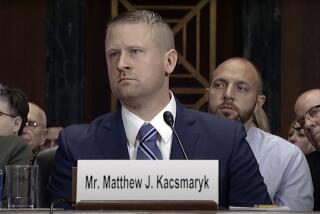New Ploy in a War on a Court
Those in Congress determined to split the U.S. 9th Circuit Court of Appeals were unable to do so this term, but they have continued their effort, only thinly disguised, by approving a study of the circuits ŌĆ£with particular reference to the 9th Circuit.ŌĆØ
An independent, balanced study of all 11 federal circuits, their staffing and their caseloads would be a service to everyone with business before the courts. Caseloads have ballooned in many circuits. Federal trial and appellate courts would be hard-pressed to keep pace even if they had a full complement of judges. But because the Republican-controlled Senate has essentially stonewalled President Clinton, refusing to confirm many of his nominees to the federal bench, one in eight seats are now empty. Those vacancies have caused delays in litigation and burnout among the judges trying to take up the slack.
The problem is particularly acute in the century-old 9th Circuit, by far the largest, which covers California and eight other Western states. Many in Congress are angry over what they see as overly liberal decisions by 9th Circuit jurists on issues including assisted suicide and environmental protection and have seized on its size as a problem. The vast size of the circuit, critics insist, causes delays in hearing cases and erodes collegiality and coordination among its judges, already overwhelmed by the 10 vacancies among the 28 seats. Filling those seats would go far toward reducing the backlog of cases and improving morale. Splitting the circuit alone, without adding staff, is not likely to improve the situation.
There is little sacred about the existing boundaries of any circuit, and it would be prudent to review them all, perhaps making adjustments to deal with any changes in the number and complexity of the cases each circuit hears.
We fear that will not happen. Congress has directed Chief Justice William H. Rehnquist, long at odds with some 9th Circuit judges, to appoint the study panel. CongressŌĆÖ directive that Rehnquist focus on the 9th Circuit suggests the panel can ignore the other circuits. But Congress will set a very dangerous precedent if it makes decisions about the boundaries of this circuit or the resources available to it based on the sort of decisions they want its judges to make. A neutral study is still possible--and necessary.
More to Read
Get the L.A. Times Politics newsletter
Deeply reported insights into legislation, politics and policy from Sacramento, Washington and beyond. In your inbox three times per week.
You may occasionally receive promotional content from the Los Angeles Times.










